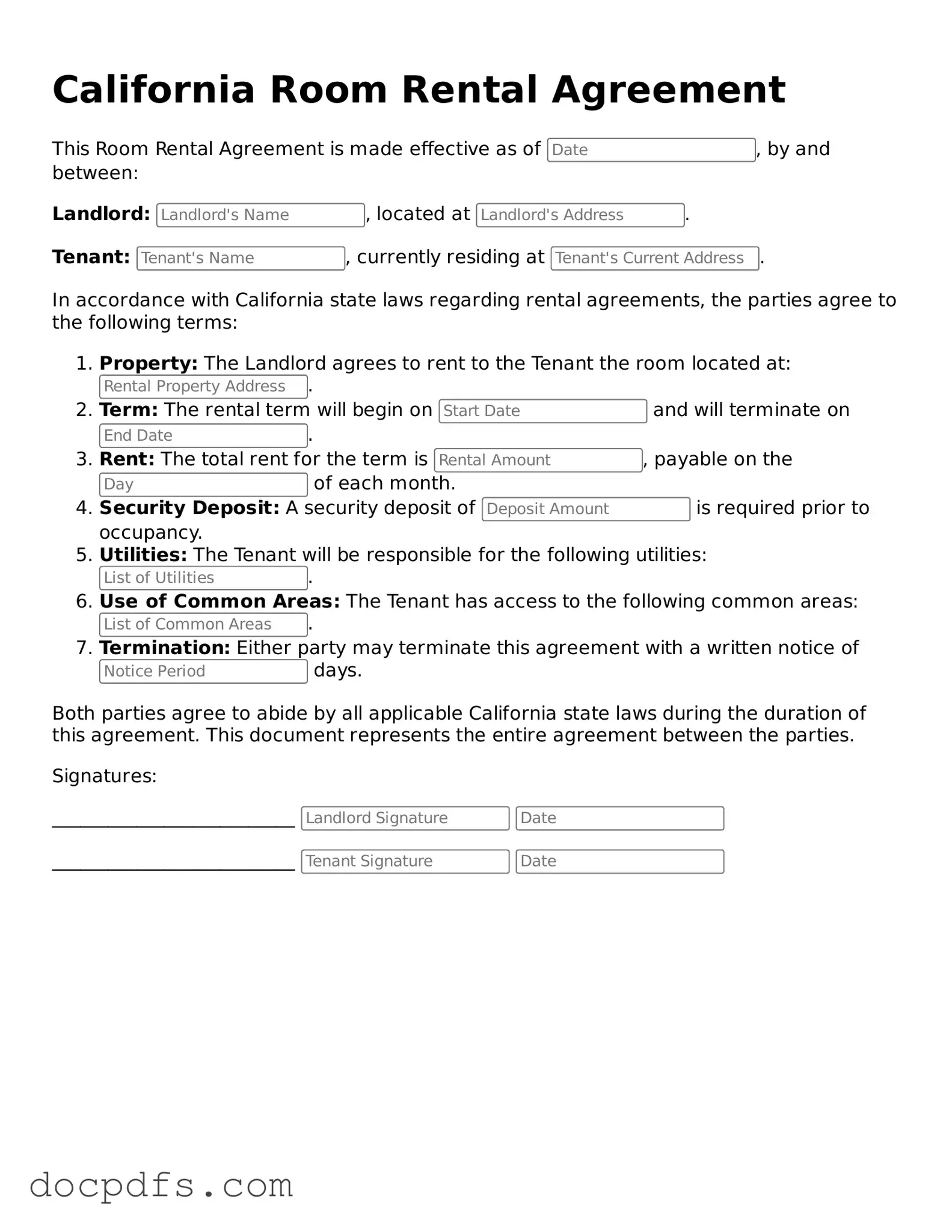The California Room Rental Agreement form is a legal document that outlines the terms and conditions of renting a room in California. This agreement serves to protect both the landlord and the tenant by clearly defining the rights and responsibilities of each party. It typically includes details such as the rental amount, duration of the lease, security deposit requirements, and rules regarding the use of the property.
This form is intended for landlords and tenants entering into a rental agreement for a room within a residential property. Landlords may include property owners or managers who are renting out individual rooms, while tenants can be individuals seeking a place to live. It is important for both parties to understand their obligations under the agreement.
What are the key components of the Room Rental Agreement?
The key components of the California Room Rental Agreement typically include:
-
Parties Involved:
Names and contact information of the landlord and tenant.
-
Property Description:
Address and description of the rental property.
-
Lease Term:
Start and end dates of the rental agreement.
-
Rent Amount:
Monthly rent amount and payment due date.
-
Security Deposit:
Amount required for the security deposit and conditions for its return.
-
Rules and Regulations:
Guidelines for property use, including any restrictions on guests, pets, or smoking.
How is the rental amount determined?
The rental amount is typically determined by several factors, including the location of the property, the size and condition of the room, and current market rates for similar accommodations. Landlords may also consider additional amenities offered, such as utilities, internet access, and parking. It is advisable for both parties to research comparable rental rates in the area to ensure fairness.
Can the Room Rental Agreement be modified?
Yes, the Room Rental Agreement can be modified, but any changes must be documented in writing and agreed upon by both the landlord and tenant. Common modifications may include changes to the rental amount, lease term, or rules. It is essential to keep a signed copy of any amendments to maintain clarity and avoid disputes.
What happens if a tenant violates the agreement?
If a tenant violates the terms of the Room Rental Agreement, the landlord may take specific actions depending on the nature of the violation. Common responses include:
-
Issuing a warning or notice to remedy the violation.
-
Charging late fees for overdue rent payments.
-
Beginning eviction proceedings for serious breaches, such as non-payment of rent or illegal activities.
It is crucial for landlords to follow legal procedures when addressing violations to avoid potential legal issues.
Is the Room Rental Agreement legally binding?
Yes, once both parties sign the Room Rental Agreement, it becomes a legally binding contract. This means that both the landlord and tenant are obligated to adhere to the terms outlined in the agreement. If either party fails to comply, the other party may have legal recourse to enforce the agreement or seek damages.
